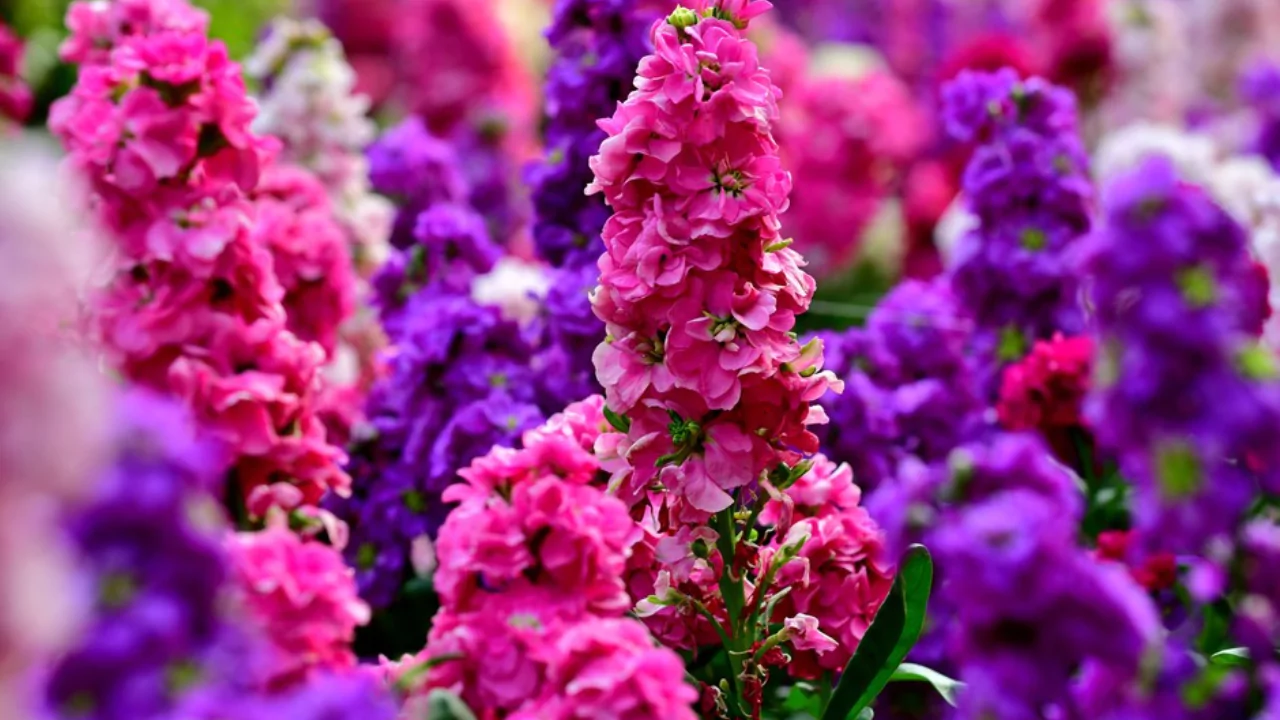
Stock (Matthiola incana), also known as gillyflower or perfume plant, ranks among the most fragrant annual flowers. Its aroma is often described as sweetly spicy and simply delightful. Experienced gardeners recommend placing the plants at nose level so the intoxicating scent fills the air whenever you walk past.
Sturdy and resilient, stocks thrive in pots, window boxes, or directly in garden beds. Because they prefer cooler weather, these flowers typically bloom from early spring through early summer. When summer heat pushes nighttime temperatures above 60 degrees Fahrenheit, stocks stop forming new buds and the show comes to a halt.
Whether stock is grown as an annual, biennial, or perennial largely depends on local climate conditions. In northern regions, gardeners treat stock as an annual because even light frost will damage the plants, preventing them from surviving to the following season.
Conversely, mild coastal or southern gardens often regard stock as a perennial; the tough plants endure winter, produce thicker, woody stems the next spring, and reappear year after year-until late-season heat finally ends their run. The life cycle can also resemble that of a biennial, since many strains bloom, set seed, and fade during their second growing year.
Flower colours range from classic whites, soft pinks, lavenders, and light roses to richer jewel tones such as deep red, purple, and indigo blue. Depending on the cultivar, height varies dramatically, with dwarf forms barely reaching eight to twelve inches and standard varieties climbing to two or even three feet tall.
M. longipetala, a night-blooming stock hybrid, may not dazzle the eye when daytime visitors stroll through the garden. Its petals are narrower and paler than those of brighter variants, giving it a somewhat fragile appearance. Yet when evening falls and the blooms finally unfurl, their rich, spicy scent floods the air and stops people in their tracks.
Though the flowers are seldom observed in full daylight and critics describe them as wispy or muted, the intoxicating aroma justifies longipetala’s steady demand among growers worldwide. Night pollinators find it irresistible, and so do many gardeners who grow it purely for the fragrant twilight show.
Varieties of Stock Flower
Breeders have worked tirelessly to expand stock flower colours and bloom sizes, resulting in more than sixty recognised cultivars today. Each one offers a slightly different blend of fragrance, durability, and hue, appealing to both cut-flower enthusiasts and border planters. Below are a few standouts that we think you will enjoy.
‘Starlight Sensation’ Stock
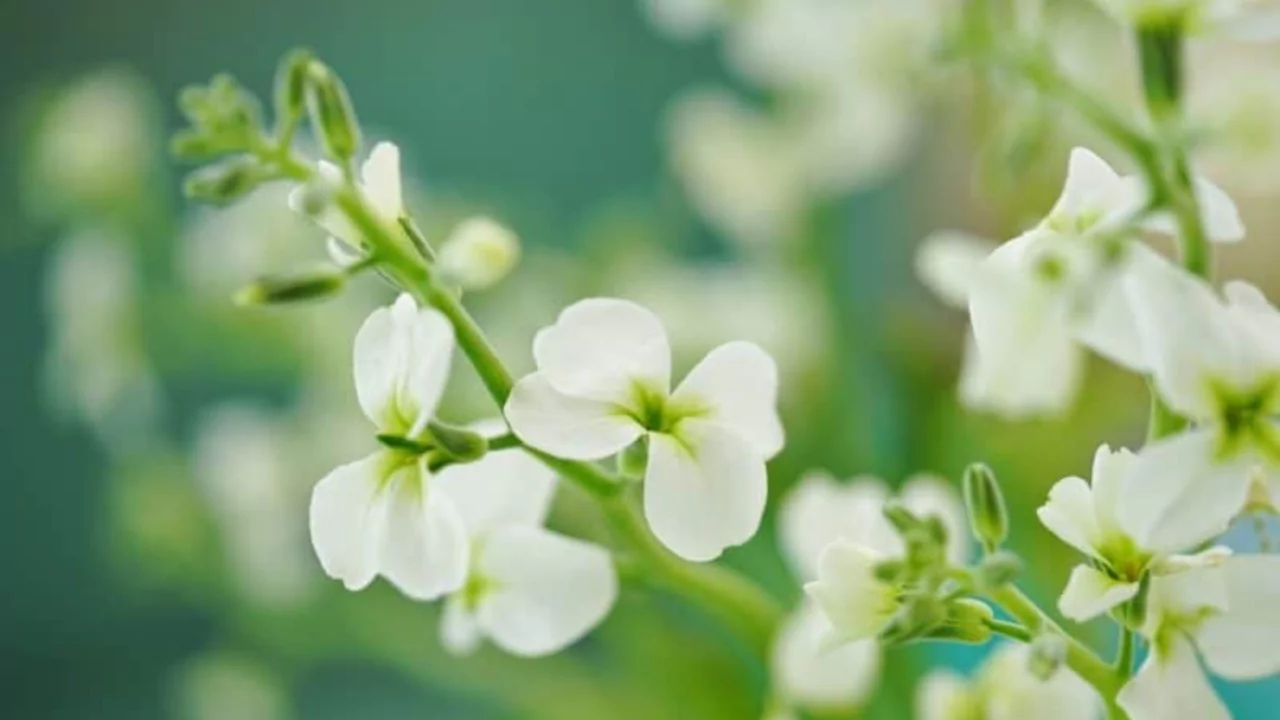
The Starlight Sensation hybrid reaches a height of only 18 inches and features a cheerful mix of pastel hues. Because the seeds give rise to plants in different colors, each new row feels a little surprise. Growers can count on large, fragrant, single flowers appearing consistently from spring well into early summer, no matter what shade blooms first.
‘White Goddess’ Stock
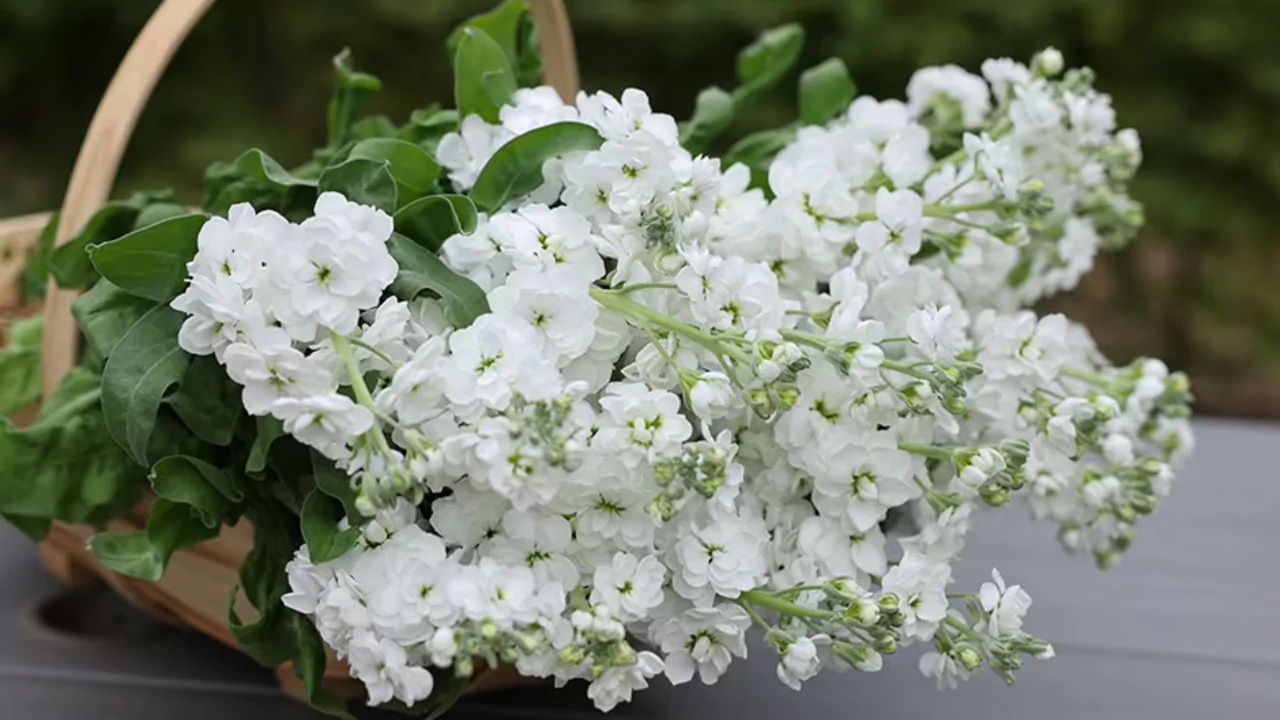
White Goddess stock ranks among the most graceful flowers available to home gardeners. Each stem carries several large, sweet-smelling double blooms set against a crisp white backdrop and finished with a pale green heart. With its winning scent, striking form, and dependable show, this hybrid quickly earns a favorite spot in garden beds and bouquets alike.
‘Legacy’ Stock
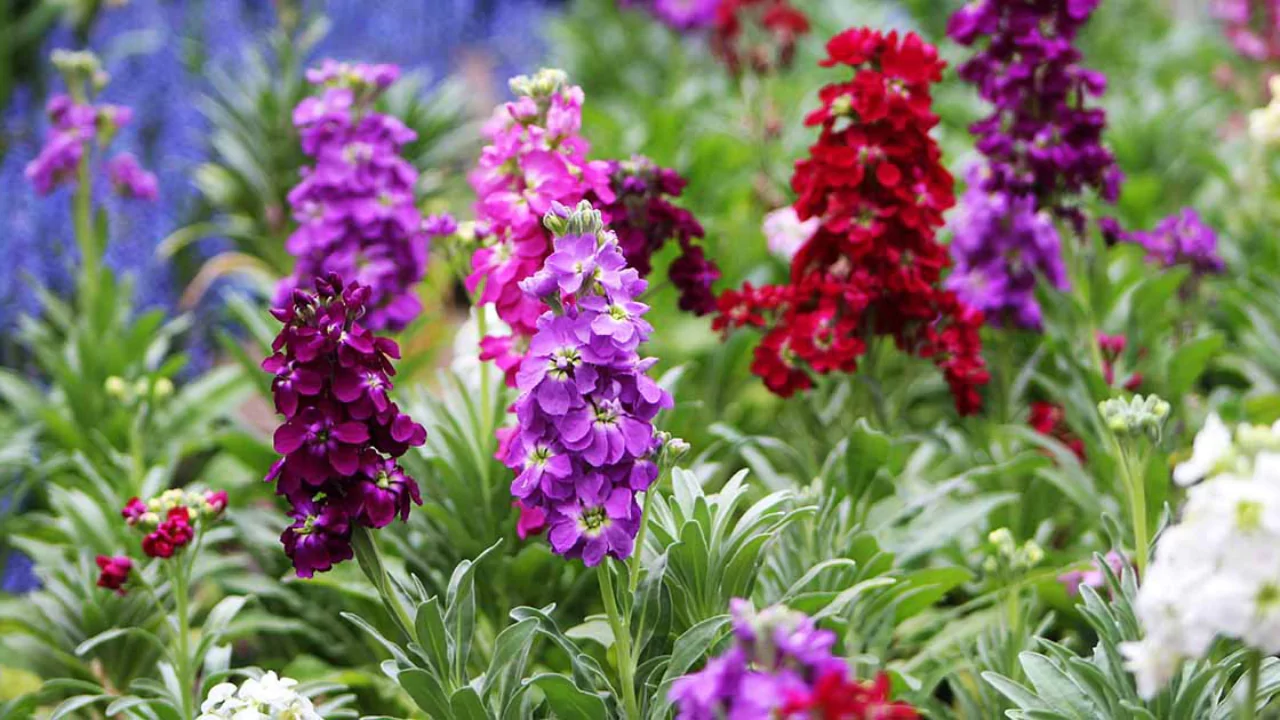
Legacy stock reaches only two feet tall, yet each plant holds a rich display of fully double blooms in almost every imaginable color. Beyond their striking appearance, the blossoms give off that classic spicy-sweet fragrance that long ago settled into modern gardening lore. Used in bedding displays, containers, and cutting gardens alike, these hybrids show exactly why stock has moved from old-fashioned to trendy in such a short time.
‘Cinderella’ Stock
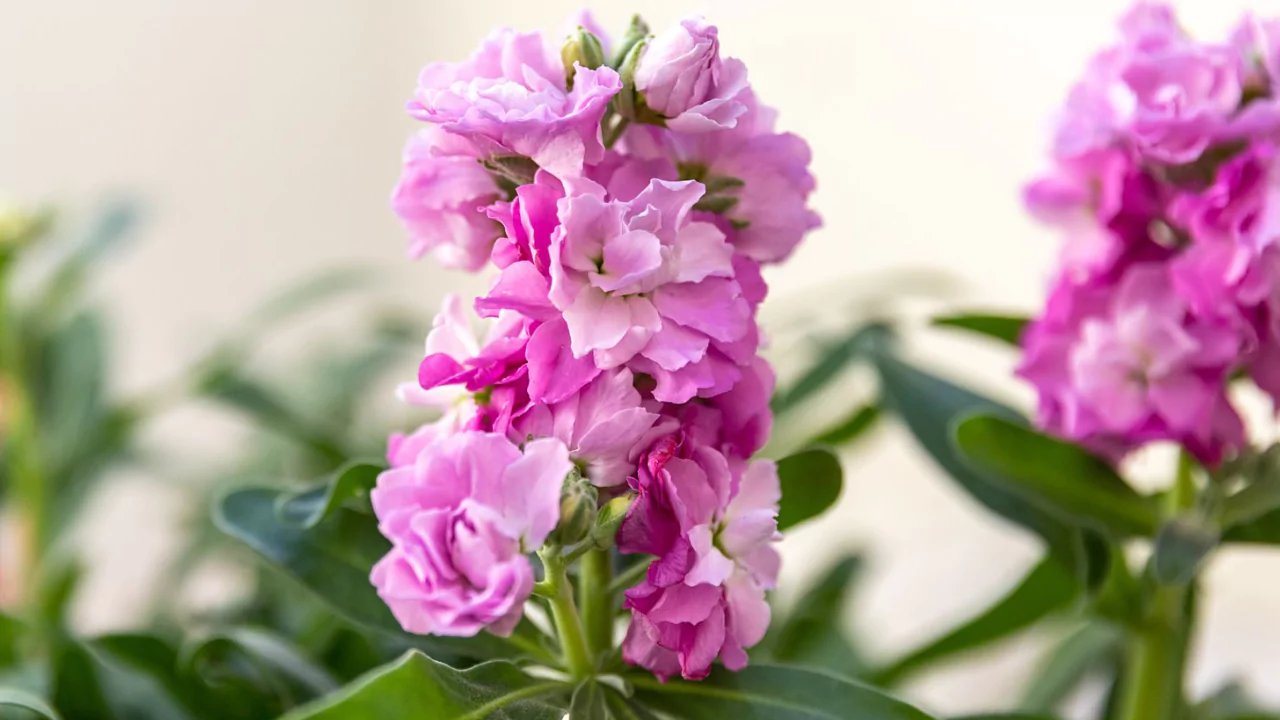
Cinderella stock trims the plant height to no more than ten inches, turning the tall classic into an adorable showpiece for smaller spaces. Although the stature is dwarf-sized, every stem still sports a cluster of double flowers in all the staple stock shades buyers expect. Breeders kept the fragrance intact, so a simple handful in a vase fills a room almost as well as its bigger cousin.
Because of the tidy habit, Cinderellas slip easily into nose-high pots or along the edge of broad perennial beds without blocking anything behind them. Gardeners delight in this miniature version when they want color at eye-level while strolling.
Growing Conditions for Stock Flower
Stock flowers do best in full sun, yet chillier regions provide partial shade. They prefer rich, loose, well-draining soil. After planting, feed once, then repeat monthly with a balanced bloom fertilizer.
How to Plant Stock Flower
You may start stock from seeds or young plants, but seedlings usually succeed better. When using seedlings, dig holes wide enough for roots, bury each crown barely two inches deep, and space plants at least fifteen centimeters apart.
For seeds, start indoors early, scatter them on soil, and cover with no more than half an inch of fine mix. Water gently and regularly until sprouts appear, then reduce to twice weekly.
Transplant stock into the garden after the last frost, spacing plants seven to twelve inches apart. Position them in full sun, though in especially hot regions they appreciate a little afternoon shade. If the soil looks poor, mix in plenty of well-rotted organic matter before planting.
Care for Stock Flower
Once established, stock flowers require minimal attention. During dry spells, give them water; otherwise, rain usually does the job. Fertilize once a month with any general-purpose bloom booster. Deadhead spent flowers to prompt fresh buds and extend the overall display.
Garden Pests and Diseases of Stock Flower
Stock flowers are remarkably robust and typically sail through the growing season without serious trouble from pests or diseases. Should the odd problem pop up, a basic insecticide, fungicide, or natural repellent will usually clear it away with little fuss.
Companion Planting with Stock Flower
For a true cottage-garden look, set stock flowers beside heliotrope and phlox. The trio also works beautifully in bouquets, bringing soft colour and reliable scent indoors. Another great match is nemesia: they bloom together in spring, then the nemesia steps up when stocks fade in summer and keeps the display going for weeks.
For a planting scheme that carries through spring and then quietly gives way, pair stocks with pansies. When both varieties enter dormancy, lift them out and replace the space with warm-season annuals like marigolds or petunias. A fragrant blend worth trying mixes stocks with sweet peas.
Sweet peas can be treated as annuals, or grown over several years, and their wide palette comes in large, ruffled blooms. Most cultivars also boast a heady perfume, so the duo of sweet peas and stocks might produce the best scent on your street.
Stock Flower for Indoor Bouquets
Stock is an obvious choice for kitchen tables and guest-room bouquets. Once cut, the flowers hold their shape and color far longer than many other varieties. Even after leaving the stem and soil behind, the blooms keep releasing that lovely fragrance for everyone indoors to enjoy.
Here are a few tips for getting the most out of your cut-flower arrangements: First, strip the leaves from the very bottom of each stem. Any portion that will sit below the water line in the vase should be bare.
Doing this stops the plant from wasting energy trying to keep hidden foliage alive and lets the remaining leaves feed and support the blooms you want to keep as lively as possible. Second, change the water every single day to stay ahead of bacteria and keep the stems drinking freely.
While you replace the water, freshly snip the ends again, cutting at a slight angle. Third, stir a small packet of florist food into the new water before placing the flowers back in the vase. Just because the stems no longer touch soil doesnt mean they dont need nutrients to stay firm and colorful.
Treat them like passengers on a long road trip-give them regular fuel stops and theyll carry on longer, filling your home with cheer. The better you take care of your arrangements after you cut them, the longer they will last to fill your home with beauty and joy.